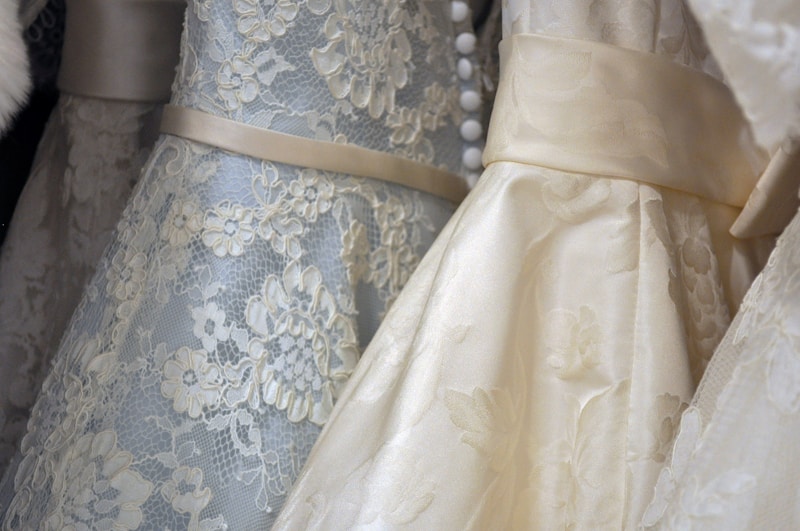Understanding the Role of Fabric in Bridal Dress Alterations
Understanding the Role of Fabric in Bridal Dress Alterations
Understanding the Role of Fabric in Bridal Dress Alterations
Every bride dreams of walking down the aisle in the perfect wedding dress. However, the journey to that moment often includes a series of alterations that must account for a variety of factors, one of the most crucial being the fabric. Understanding the role of fabric in bridal dress alterations is essential for achieving a flawless fit and overall look. In this article, we’ll explore the significance of fabric, common types used in bridal dresses, and how they affect alterations.
The Importance of Fabric in Bridal Dress Alterations
When it comes to bridal dresses, fabric selection plays a vital role not just in the garment’s aesthetics but also in how well it can be altered. Different fabrics exhibit unique characteristics that impact the ease of alterations, the final fit, and the overall silhouette. Moreover, certain fabrics can only be adjusted to a limited extent, which can make a significant difference in the final outcome.
Key Factors to Consider
1. Fabric Types: Understanding the fabric types helps in predicting how alterations will affect the overall dress. Common bridal fabrics include satin, tulle, lace, and chiffon. Each fabric has its own properties that can influence alterations.
2. Weight and Drape: Heavier fabrics like satin hold their shape well, making them easier for structured designs. In contrast, lighter fabrics such as chiffon require more precision in draping and adjustments, as they can easily lose form.
3. Texture and Stretch: Some fabrics, like stretch lace, allow more flexibility for fitting but may require specialized techniques to avoid distorting the fabric’s look during alterations.
| Common Bridal Fabrics | Characteristics | Alteration Suitability |
| Satin | Smooth, glossy finish, heavier | Excellent for structured garments |
| Tulle | Lightweight, net-like texture | Requires skill for adjustments |
| Lace | Intricate patterns, can be delicate | Tricky, but beautiful results |
| Chiffon | Flowy and sheer | Needs careful handling during alterations |
Types of Fabric Used in Bridal Dresses
Choosing the right fabric can greatly enhance the visual appeal and fit of the bridal dress. Here, we delve deeper into the most popular fabrics used:
Satin
Satin is a luxurious fabric known for its smooth surface and elegance. It is typically heavier, which provides excellent structure and drape for various designs. Because of its weight, alterations such as taking in or letting out seams can be executed effectively, making it a favorite for bridal gowns.
Tulle
Tulle is a lightweight, net-like fabric often used for skirts and overlays. While tulle can create stunning volume and delicate details, it requires more nuanced alterations to avoid fraying or distortion. Those opting for tulle should have skilled dressmakers who can manage the intricacies involved.
Lace
Lace brings a romantic and vintage appeal to any bridal gown. While gorgeous, lace can complicate alterations due to its delicate nature. Skilled seamstresses may need to reattach intricate lace patterns seamlessly, which can increase the time and cost involved.
Chiffon
Chiffon is an ultra-light fabric that flows beautifully, creating an ethereal look. Though it offers a stunning appearance, chiffon requires precision in tailoring, as its lightweight structure can easily shift during alterations. Be sure to select a tailor experienced in working with chiffon.

Challenges Faced in Alterations
Bridal dress alterations present unique challenges, depending on the fabric type. Here are some common hurdles seamstresses encounter:
Seam Matching
When altering dresses made of patterned fabrics, matching seams can be critical to maintaining the integrity of the design. This is particularly challenging with lace where patterns may need to align perfectly.
Cost of Professional Alterations
Bridal dress alterations can be expensive, especially if the fabric requires special handling. It’s essential to budget for alterations, particularly if the fabric is complex. Expect to pay between $150 to $600, depending on the level of alteration needed.
Finding the Right Tailor
Not all tailors are experienced with bridal fabrics. It’s vital to choose a tailor who specializes in bridal alterations and understands the nuances tied to various fabrics. This ensures that the alterations improve the fit without compromising the fabric’s effect.
Tips for Successful Bridal Dress Alterations
To achieve the best results for bridal dress alterations, consider these tips:
1. Start Early
Begin alterations as early as possible. This allows time for multiple fittings and adjustments, especially when dealing with intricate fabrics.
2. Schedule Multiple Fittings
Plan for at least two or three fittings. Fabrics can behave unexpectedly, so multiple fittings can help iron out any unforeseen issues.
3. Communicate with Your Tailor
Maintain open communication with your tailor about what you're looking for in terms of fit and style. They can provide valuable insights regarding fabric limitations.
4. Bring Your Accessories
If you have specific shoes, undergarments, or accessories, bring them to fittings. These items can significantly impact the overall fit and look of your dress.
Conclusion
Understanding the role of fabric in bridal dress alterations is paramount to ensuring a stunning and perfectly fitted wedding gown. Different fabrics bring their own unique qualities and challenges, which can affect how dresses can be adjusted. For brides, it remains essential to communicate clearly with their tailor, start alterations early, and be mindful of the fabric characteristics. By paying careful attention to these factors and taking appropriate steps, brides can ensure that their dresses fit impeccably, helping them to shine on their special day. Whether embracing the elegance of satin or the delicacy of tulle, the ideal fabric paves the way for transformative alterations that make bridal dreams come true.
